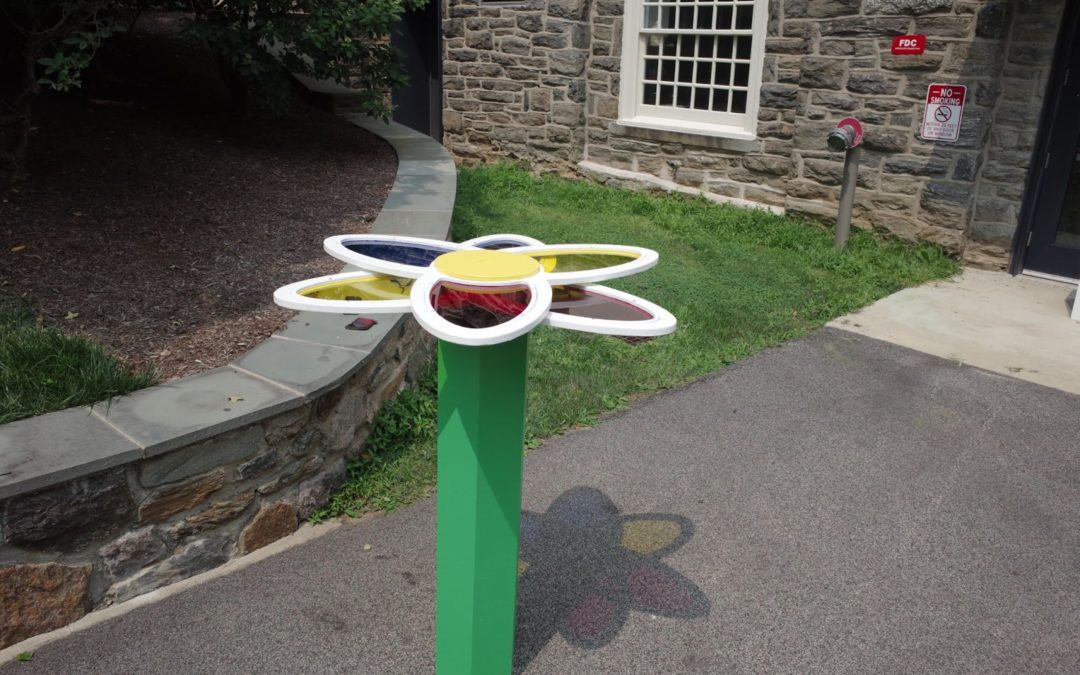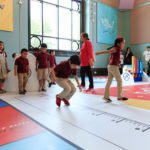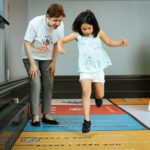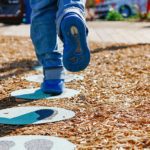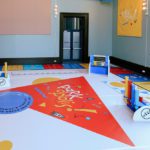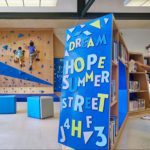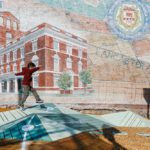A team of students from Haverford College spent their summer in a “Design + Make” fellowship, working with PLLAN to design potential installations for Playful Learning Landscapes. Imagined by Kent Watson, this fellowship was designed to put tools in the hands of students, giving them an opportunity to take control of their art from beginning to end. Though this is the second year of the fellowship, this summer’s students are the first to really get the full experience of being in the Makers Art Space. Students enrolled in this year’s 8-week program were split into two teams and tasked with designing, prototyping and creating their very own Playful Learning Landscapes installations.
These prototypes integrated a variety of Playful Learning Landscapes’s 6 C’s learning goals in their designs. One installation, dubbed the Shadow Stem from Julia Coletti (@juliacoletti) and Silvan Sooksatan (@s.i.l.v.a.n), employs the ideas of communication, content, and creative innovation. The “stem” of the structure holds 6 transparent petals of red, yellow, and blue. Children can rotate the petals to create different colors in the shadows on the ground.
Another installation, this time from Izzy Ray (@izzy.ray47), Neha Thumu (@antares.nct), and Kit McCaney (@katemccaney), created a game of I Spy that brings together the entire playscape. Seen below as a mock-up from the design process, laser-cut wooden structures and signs encourage children to find different plants and animals in four different elements, including windchimes and a life cycle wheel. The students hope that this type of installation will engage children in communication, collaboration, and confidence while learning about the flora and fauna that is native to their region.
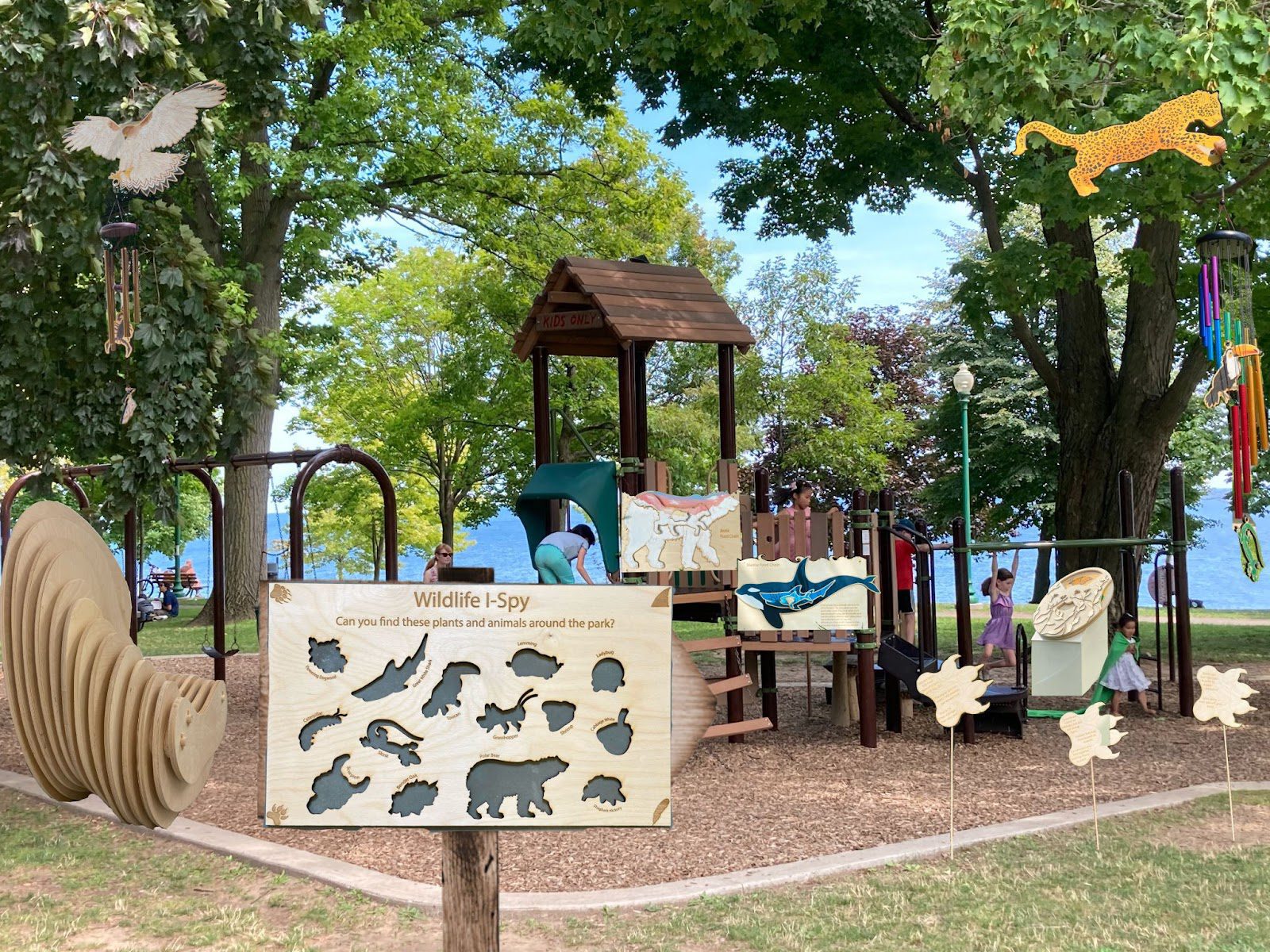
The Design + Make summer fellowship culminated with a presentation in late July to the Haverford and Playful Learning Landscapes communities. The teams described their design process, how they incorporated learning goals for children and encouraged interactions between children and caregivers, and future modifications that would improve designs. The prototypes will remain on display at Haverford College.

